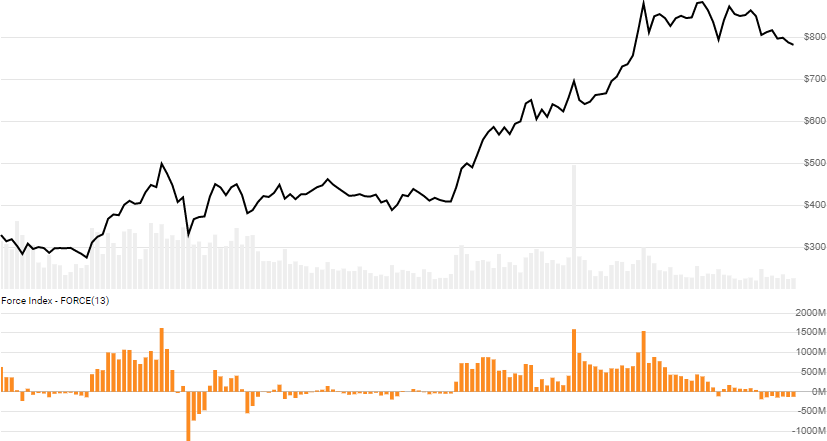Force Index
Created by Alexander Elder, the Force Index depicts volume-based buying and selling pressure based on the change in price. [Discuss] 💬

// C# usage syntax
IEnumerable<ForceIndexResult> results =
quotes.GetForceIndex(lookbackPeriods);
Parameters
lookbackPeriods int - Lookback window (N) for the EMA of Force Index. Must be greater than 0 and is commonly 2 or 13 (shorter/longer view). Default is 2.
Historical quotes requirements
You must have at least N+100 for 2×N periods of quotes, whichever is more, to cover the warmup and convergence periods. Since this uses a smoothing technique for EMA, we recommend you use at least N+250 data points prior to the intended usage date for better precision.
quotes is a collection of generic TQuote historical price quotes. It should have a consistent frequency (day, hour, minute, etc). See the Guide for more information.
Response
IEnumerable<ForceIndexResult>
- This method returns a time series of all available indicator values for the
quotesprovided. - It always returns the same number of elements as there are in the historical quotes.
- It does not return a single incremental indicator value.
- The first
Nperiods for will benullsince they cannot be calculated.
⚞ Convergence warning: The first
N+100periods will have decreasing magnitude, convergence-related precision errors that can be as high as ~5% deviation in indicator values for earlier periods.
ForceIndexResult
Date DateTime - Date from evaluated TQuote
ForceIndex double - Force Index
Utilities
See Utilities and helpers for more information.
Chaining
Results can be further processed on ForceIndex with additional chain-enabled indicators.
// example
var results = quotes
.GetForceIndex(..)
.GetEma(..);
This indicator must be generated from quotes and cannot be generated from results of another chain-enabled indicator or method.